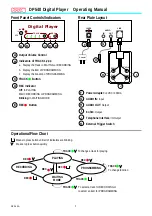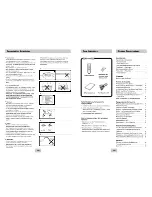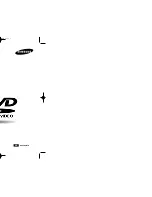
Page
2
SPECIFICATIONS
Power output:
Wow and Flutter:
Audio Frequency Response:
Signal to Noise Ratio:
Mic Input:
Aux Input:
Aux Output:
Sync Track Frequency Response:
Sync Input/Output:
Sync Tones:
Fast Forward/Rewind Time:
Speaker:
Power Source:
Dimensions:
Weight:
2 watts continuous (rms) into 9 ohms at less than 5% THD,
Less than 0.22% wrms
8Hz to 10kHz +/-3dB.
45 dB minimum unweighted.
0.25 mV sensitivity, for use with microphones with
impedance ratings between 50 and 5,000 ohms.
250 mV sensitivity at 15,000 ohms impedance.
500 mV from 0 dB reference tape, 250 nW/m.,
I,000 ohms impedance
80 Hz to 8 , 0 0 0 H z +/- 5 dB.
500 mV rms referred to 250 nW/m. recorded level
150 Hz Tape Stop/Restart,
1,000
Hz Slide advance.
100 seconds for C-60 cassette.
5” round.
12OV 50-60 Hz AC (240V 50-60 Hz option available)
or four D-size batteries.
1 1” x 1 1” x 3 -1/2”.
Approximately 6.0 Ibs.
DESCRIPTION OF OPERATION
POWER SUPPLY
Power can be supplied to the 5275 either via line cord or bat-
teries. The unit comes wired for 12OVAC but the wiring can be
changed to 230VAC. Contact the factory for details. Q10 is a
diode-connected germanium transistor, used to keep AC-de-
rived power from being fed into the batteries while offering the
lowest forward voltage drop from the battery supply. D21 pre-
vents battery voltage from charging C97, eliminating the possibil-
ity
of
capacitor leakage causing the battery to rundown.
SW9 switches on the power whenever the tape transport is en-
gaged. Thedifferent LEDs can be monitored by putting the trans-
port into
Play
and Pause.
AUDIO RECORD/PLAYBACK
The use of an integrated circuit designed specifically for cassette
systems considerably simplifies the circuitry necessary for re-
cord and playback of audio signals in the 5275. This monolithic
IC contains a preamplifier circuit, an automatic level control cir-
cuit, a bridged power amplifier, and a meter drive circuit. Con-
sequently, the external circuitry for the audio portion of the 5275
consists mainly of switching, equalization, and coupling. The only
active devices are Q12 and Q13, which mute the main amp dur-
ing turn-on while the preamp voltages come up and stabilize.
Q14, an Aux Out buffer, and Q18, which locks the ALC circuit off
in Audio Playback.
For recording, the Bias Oscillator is turned on via SW1-5 by bias-
ing Q2 to saturation. This provides aground to the emitter of Ql,
which starts the Bias Oscillator.
With no external inputs connected to the unit, the Internal Micro-
phone is automatically connected as a signal input in the Record
Mode. Plugging in an Auxiliary Input disconnects the Internal
Mike; connecting an External Microphone disconnects either the
Internal Mike or the Aux Input. The Internal Loudspeaker is dis-
connected in the Record Mode to eliminate acoustic feedback.
The signal being recorded can be monitored via the External
Speaker Jack by headphones or by a loudspeaker placed far
enough from the signal source to prevent acoustic feedback.
CAUTION: Always be sure the Red Cue (Sync) Rec/Erase light
is OFF when playing an audio-only tape with material recorded
on both sides.
When playing back prerecorded tapes, it is possible, under the
following circumstances, to erase the side of the tape you are not
listening to:
1. Sync Rec/Erase On
2. Erase Prevention Tab for other side is in place (affects home-
made tapes: commercial tapes come with this tab removed).
The reason for this is that the Sync Track recorded by the 5275
corresponds to the “other side” of a normal audio-only cassette.
Thus if you take a cassette you have recorded and play it on the
5275 with the Sync Record Switch on, you will erase the side y o u
are not listening to unless me small plastic tab at the rear right
has been pushed out. If the tab has not been removed, SW8 will
dose. allowing SW5 to turn on the Sync Record/Erase circuitry.
Commercial tapes are not subject to this problem as they come
with no tab in place.
SYNCTONERECORDANDPLAYBACK
The 5275 has circuitry for sensing and recording 150 Hz and 1
kHz tones for making and using ANSI Standard synchronized
slide programs using one or two slide projectors or one slide pro-
jector with a Sync (Cue) Tone to stop the cassette motor. The fol-
lowing description primarily concerns itself with the 150 Hz sens-
ing circuit; the 1 kHz circuit is identical in theory, differing only in
time constants, except as noted.
The heart of the circuit is a twin-T network in the feedback of
IC3D. This network has medium Q and makes the IC a sensitive
filter. When the Q issufficientlyincreased, the IC bewmes an os-
cillator. The combination of R132 and R163 makes the network
have only medium Q; when Q8 shunts R163, the circuit oscil-
lates, generating a Sync Tone.

































